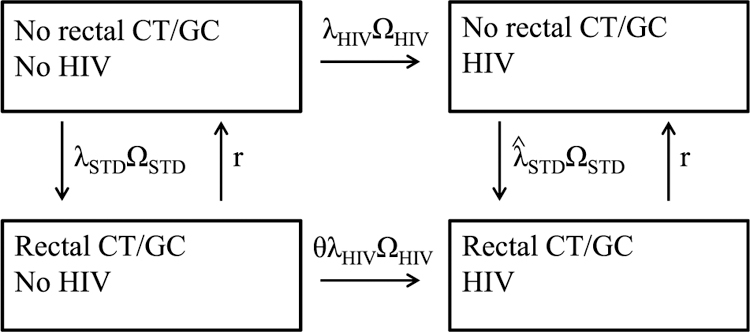Figure 1.

Illustration of the model. The 4 health states are mutually exclusive, and transition occurs when rectal CT/GC infection is acquired, when rectal CT/GC infection is cleared, or when HIV is acquired. The HIV incidence rate among those without rectal CT/GC infection is λHIVΩHIV, where λHIV is the HIV incidence at the onset of the screening program and ΩHIV is an adjustment factor to account for changes in the prevalence of HIV in sex partners over time. The rate of HIV incidence among those with rectal CT/GC infection is assumed to be ϴ times that of those without rectal CT/GC infection. The incidence rate of rectal CT/GC infection is λSTDΩSTD and among those without and with HIV, respectively, where λSTD and are the incidence rates of rectal CT/GC infection at the onset of the screening program among those without and with HIV, respectively, and ΩSTD is an adjustment factor to account for changes in the prevalence of CT and GC in sex partners over time as a result of the screening program. The clearance rate of rectal CT/GC infection (r) is a function of 2 factors: duration of infection and screening rates.
